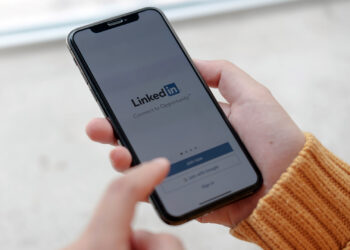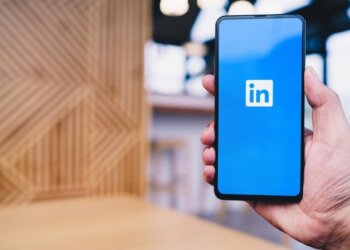Most attorneys know they need to have a LinkedIn profile. The problem is that lawyers seem dumbfounded when it comes to using LinkedIn as a means of client development. It’s a mystery to them. It shouldn’t be. Why?
In 2015, I wrote a short LinkedIn post with some really good tips on recruiting partners. That one post earned me a new client and an additional $150,000 in personal income. In 2018, I posted a link to one of my blog posts on LinkedIn and that earned me an additional $100,000 in personal income. During 2020 and 2021, we have been turning away new clients and evaluating which of our current and previous clients were worth our focus.
Were you turning away new and current clients in the last 14 months? Do I have your attention yet?
Alan Golik wrote an excellent article for Attorney at Law Magazine about what attorneys should do when writing and designing their LinkedIn Profile. While that is the obvious place to start, the question I get most often is “Now that I’ve created a good profile, what can I do that will actually generate business?”
Here are four quick tips that will help you get business through LinkedIn:
No. 1: Invite the Right People to Connect with You
I’ve worked with attorneys who have literally, never invited anyone to connect with them on LinkedIn! They don’t understand the value of increasing their volume of connections or why they should target the right people.
They are often connecting with other attorneys in the same practice area, at similarly sized firms, who charge similar rates. Instead of connecting with potential clients, they connect with competitors. Why? These are people they already know, so it’s easier and less intimidating. It’s also a mistake.
If you’re going to connect with people, connect with potential clients and referral sources! The easiest way to start, is to type “General Counsel” in the search bar. This will provide a list of people who have that title and most of the people on the first few pages will be local or at least in your region. For example, I’m in Las Vegas and the first several pages were filled with General Counsel located in Las Vegas, L.A. and the Bay Area.
Once you start connecting with the right people, their connections will see your replies and posts, and invite you to connect. You should also invite people to connect when they post or reply on the pages of your connections.
Constantly connecting with “2nd degree” connections, you’ll create a snowball effect and you’ll see more and more incoming invitations to connect. For example, I went from having a couple hundred connections, to over a thousand in about six months. Then I went from about a thousand to over three thousand connections in less than a year. With the help of a little tech called “Meet Alfred” (a program that automates the invitation process), I’ll be at about 13,000 connections of (mostly) high value connections.
In the digital world, where Instagram and Twitter influencers have over a million followers, 13,000 may not sound like much. But the goal on LinkedIn is different. Ten thousand attorneys and C-Levels are worth more than a 100,000 Star Wars Cosplayers or Taylor Swift fans.
It’s important to remember that unlike other platforms, LinkedIn is for business. So while there is certainly nothing wrong with having a high volume of connections, the point is to focus on quality over quantity.
No. 2: Join the Right Groups
While I personally only have 13,000 connections, I have a “group reach” of well over one million people who are relevant to my business. For example, there is a LinkedIn group called Law Jobs that has nearly a quarter million members. As the CEO of both a legal recruiting firm and also a legal temporary staffing firm, my reasons for being a member of this group is obvious.
A health care attorney would be wise to join groups of health care executives. A patent attorney might join a group of executives in tech, pharma or other industries, depending on their niche.
Whether they have a few thousand members or hundreds of thousands, the key is to join groups that are going to be filled with potential clients and referral sources.
No. 3: Post the Right Content, Consistently
I try to post on LinkedIn at least once a week. But to be forthcoming, I often get busy and can’t always do that. Sometimes I only post once every two weeks and even then, it’s curated content (sharing a post or article someone else has written) with a few insights and commentary.
Posting something on LinkedIn takes less than two minutes so there’s no excuse for not posting at least once every couple of weeks. I actually have reminders in my Outlook so that this doesn’t slip my mind.
My posts are primarily business oriented and like this article, designed to offer the highest possible value to my readers. Attorneys should write full articles on their blog or LinkedIn page that help clients save money on legal costs or avoid the pitfalls that can lead to litigation in the first place. They should write about ways that clients can automate or commoditize low-level legal work, to save money. If that seems contradictory to their self-interest, they may want to consider that the genie is already out of the bottle. Remember, don’t be afraid to “give away the farm” when it comes to valuable content and counsel. Doing so, causes the reader to think “If this is what she’ll give away for free, imagine how valuable the counsel will be if I pay them!”
Whatever you post, make sure to avoid “teasers” or self-aggrandizement. No one likes articles that are nothing more than thinly disguised, self-promotion or opinion pieces.
One final tip on content: Observe the Pareto Principle (aka 80/20 Rule) in that while 80% or more of your posts should be strictly business, and 10-20% of your posts should show that you’re more than just another suit.
For example, I’ve written about volunteering, my pets, golf and one of the pieces I posted which got the most engagement, was a short, humorous post about how my wife finds me sexy because of my intellect (I will never be referred to as “buffed”).
Leverage Your Time
I have several clients who like me, have their assistants scour media for ideas and write an initial draft. The attorney will then polish the draft (or sometimes not!) and post it on their LinkedIn page. Anything ranging from being a parent lawyer at an AmLaw, to why they will not be returning to the office after COVID, can be posted.
One caveat: The old public speaker’s axiom is Never Discuss Sex, Religion or Politics. Of those three, one is an absolute on LinkedIn: Politics. If you’re a serious businessperson, you know better than to alienate half of your potential clients with a post.
The only exceptions are when the brand of the attorney is specifically associated with a political position. For example, an attorney for the NRA or one working for the LGBTQ community, could post on politics but extreme caution is still advised.
The other way to leverage your time is to use the previously mentioned software, Meet Alfred. This, combined with LinkedIn Navigator (a necessary upgrade) will cost you about $100 a month. It’s worth it. Given the value of most attorney’s time, it’s a no-brainer.
No. 4: Use the Right Title & Image
Coming up with the right title and image for your article or post is critical. You can have the greatest content in the world but if your title doesn’t get attention, no one will read it.
Effective article titles can be lists (like the title of this article), Extreme Metaphors such as the “Wave of Lawsuits” above, quotes or modified quotes e.g. “Cyber Breaches are what happens when you’re busy making other plans.”
Finally, you want to make sure to include an image with every post and article. Every digital marketing expert and survey proves that posts with images get anywhere from 40% to over 150% more clicks than posts without them.
The image should have a connection to the subject matter. For example, an article on health care law could include an attractive doctor or nurse talking with an executive. Remember that images with attractive people get more clicks than images of objects, cities etc.
The Takeaways: One post can land you a client who generates seven figures. But you have to connect with the right people, join the right groups and post often enough to be seen. Keep in mind that like all digital marketing, LinkedIn is a marathon, not a sprint. I was on LinkedIn two years before I landed my first deal. Keep at it long enough and it will pay off.










